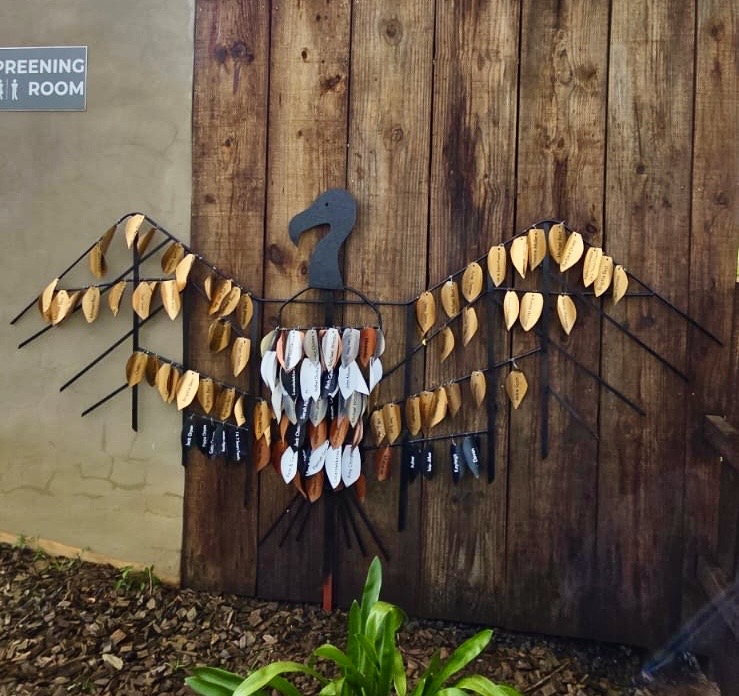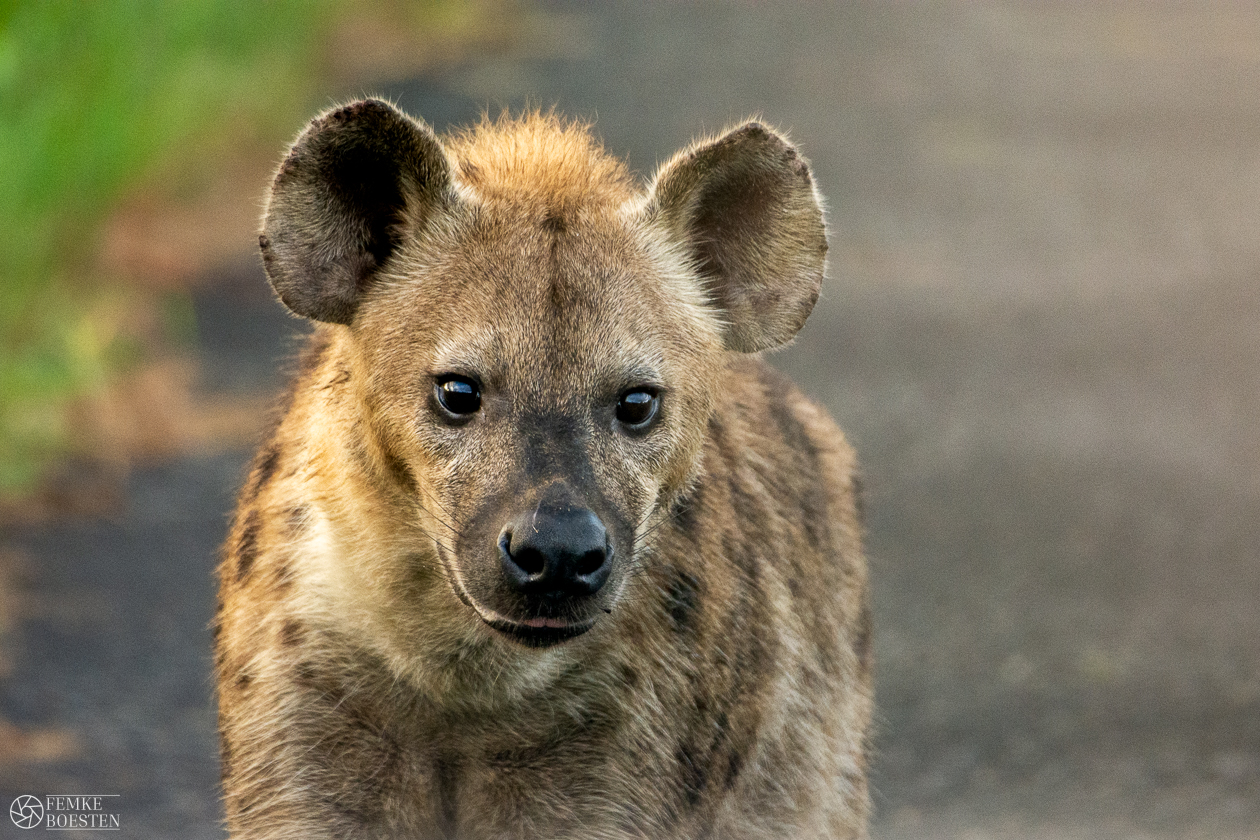Our wildlife faces the ultimate challenge of survival each and every day in the face of an ever-growing human population. The biggest challenge we face as conservationists, is the persecution of the species we are trying to protect – from an ongoing loss and fragmentation of their natural habitat, the wire snares of the bush-meat hunters, the poaching and poisoning of animals for body parts, to the people and disease carrying domestic animals who come into contact with wildlife outside of protected areas.
These challenges and existing threats to African wildlife species, are the reason why we have experienced and professional monitoring teams out in the field each and every day to make sure that these animals are safe and healthy. Furthermore we work towards broader conservation management measures and expanding the ranges of these species through various working and advisory groups that we are active members on, including the Wild dog Advisory Group of South Africa, Project Rhino KZN, KZN Vulture Group, SA Lion Management Forum and African Lion Working Group.

Existing Threats to African Wild Dogs
Why are African Wild Dogs so Endangered? The causes of African Wild Dogs’ decline are reasonably well understood and include extreme sensitivity to habitat fragmentation as a consequence of wide-ranging behaviour, conflict with livestock and game farmers, accidental killings by snares and road accidents, and infectious disease. All of these threats can be associated with human encroachment on African Wild Dog habitat, and as such, have not ceased and are unlikely to be reversible across the majority of the species’ historical range. (IUCN)

Existing Threats to Rhino
The Rhino poaching crisis is fuelled by a growing demand for Rhino horn in primarily China and Vietnam and driven by international criminal syndicates. South Africa is now one of the last countries to have a significant population of Black and White Rhinos left in the wild – one of the reasons why South Africa is bearing the brunt of what can be described as one of the worst global wildlife conservation crises of the past 100 years.
This Rhino poaching scourge has shifted heavily into our region of operation in the last 5 years, with very high Rhino densities concentrated in small protected areas being an attractive target to poachers. We have been successful with deploying a Rhino dehorning initiative in those protected areas with low enough rhino numbers to make dehorning feasible, however, the state-run parks with higher population numbers are under extreme pressure with unacceptable levels of poaching continuing, which is one of the major existing threats to African wildlife species.

Existing Threats to Vultures
Vultures throughout southern Africa are specifically targeted for traditional medicinal purposes in the ‘muthi’ trade. Poachers catch Vultures by poisoning animal carcasses, which can wipe out huge numbers at once. Many cultures also have superstitions about Vultures, such as the birds being harbingers of death, or mistaken beliefs that Vultures are a threat to healthy livestock, and in many areas, Vultures are still illegally hunted. Accidental poisoning is another issue, as some drugs used to treat livestock are fatally toxic to Vultures. The birds may also be poached as trophies or for illegal feather trading. In addition, due to their wide wingspans, Vultures are susceptible to being electrocuted by power lines.
Vultures consume animal carcasses more effectively than any other scavengers and because their digestive juices contain acids that neutralise pathogens such as cholera and rabies, they prevent the spread of diseases. By removing Vultures from a system, there is a noticeable increase in disease transmission and prevalence.

Existing Threats to Cheetah
Cheetah have disappeared from approximately 80% of their historic range in Africa. Conversion of habitat into farmlands and associated conflict with farmers and ranchers is a major threat to Cheetah in southern Africa. They are often killed or persecuted because they are a perceived threat to livestock, despite the fact that they cause relatively little damage. Cheetah are also vulnerable to being caught in snares set for other species. Snare hunting is one of the common, existing threats to African wildlife species. Another threat to the Cheetah is inter-specific competition with other large predators, especially Lions. Juvenile mortality can be extremely high due to predation.

Existing Threats to Lions
Habitat loss and fragmentation, unsustainable trophy hunting, illegal trade in bushmeat, and conflict with local people due to real or perceived threat that Lions pose to livestock, are some of the major threats that remaining Lion populations face. Captive breeding and canned hunting have also become one of the biggest threats facing this species, with the tourism market playing a big role in driving the abundance of Lions now in captivity in South Africa (approx. 8,000 individuals).
We are also starting to see the increase in poaching of Lions specifically for body parts in Southern Africa, along with concerns for the growing demand for Lion skeletons as replacement in the ever-growing Tiger Bone Wine industry in Asia. Currently these skeletons are being sourced through the captive breeding Lion population in South Africa (this year more than 800 skeletons were exported legally from SA). However, with these practices being restricted by ever-growing public pressure, it is very possible wild Lions will be targeted on a much larger scale.

Existing Threats to Leopards
Throughout Africa, the major threats to Leopard are habitat conversion and intense persecution, especially in retribution for real and perceived livestock loss. Due to the very broad habitat tolerance and large home ranges, Leopard come into conflict with people across their range. A rapidly increasing threat to Leopards is the poisoning of carcasses targeting carnivores, either as a means of predator control or incidentally. The impact of continuous and unregulated trophy hunting coupled with illegal killings has far-ranging impacts into protected areas and their populations’ integrity, especially in regions where females are shot. Skins and canines are still widely traded domestically in many African countries, where parts are used in traditional rituals and sold in an open yet illegal trade across villages and cities.

Existing Threats to Elephants
Elephant distribution is becoming increasingly fragmented across the continent due to human population growth and a massive increase in poaching in the last decade (>30,000 Elephants being poached annually), with Asia being the main destination of illegal ivory. Poaching for ivory and meat has traditionally been the major cause of the species’ decline. Currently, the poaching of Elephant has not been a major limiting factor within our region of operations. However, over the last five years there has been a noted increase in the number of poached Elephant in reserves only a few 100km north of our region.

Existing Threats to Turtles
Sea Turtles face multiple, severe threats including the tortoiseshell trade, egg collection, slaughter for meat, destructing of nesting and foraging habitat, oil pollution, entanglement and ingestion of marine debris and fishing gear and hybridization with other species. These are common, existing threats to African wildlife species living in Africa's oceans.
You can help make a difference by supporting the work done to help save these endangered and priority species. Awareness, fundraising and getting involved on the ground are key.






.jpg)





